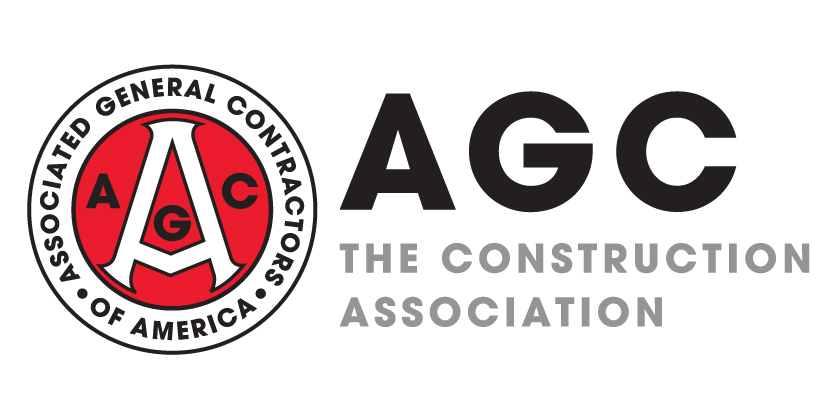
Seasonally adjusted construction employment in September exceeded pre-pandemic February levels in only eight states and the District of Columbia, according to AGC’s analysis of Bureau of Labor Statistics (BLS) data posted on Friday. Virginia added the most construction jobs over that span (4,300, 2.1%), followed by Utah (3,800, 3.3%). South Dakota posted the largest percentage gain (9.4%, 2,300 jobs), followed by Utah. Of the 42 states that lost construction jobs, California lost the most (-54,900, -6.1%), followed by Texas (51,800, -6.5%). Vermont had the largest percentage loss (-24%, -3,600 jobs), followed by Iowa (-15%, -11,400). Construction employment decreased from August to September in 17 states, increased in 32 states, and was unchange d in Arkansas and D.C. Illinois shed the most construction jobs for the month (-3,000 or -1.4%), followed by Oregon (-2,600, -2.4%) and Iowa (-2,500, -3.6%). Iowa had the largest percentage decrease, followed by Oregon and New Mexico (-2.0%, -1,000). New York added the most construction jobs over the month (5,300, 1.5%), followed by Louisiana (5,000, 4.1%) and Washington (4,200, 2.0%). Vermont had the largest percentage gain for the month (500 jobs, 4.7%), followed by Louisiana and New Hampshire (800, 3.0%). (BLS reports combined totals for mining, logging and construction in D.C., Delaware and Hawaii.)
“Commercial real estate conditions continued to deteriorate in many districts, with the exception being warehouse and industrial space where construction and leasing activity remained steady, the Federal Reserve reported on Wednesday in the latest “Beige Book,” a compilation of informal soundings of business conditions conducted from mis-August through October 9 in the 12 Fed districts. Districts are referenced by their headquarters cities. “Input costs generally increased faster than consumer prices; however, some sectors—notably construction, manufacturing, retail, and wholesale—passed along the higher costs to consumers.” AGC compiled construction-related comments from each district, including these regarding materials and labor costs and availability. Philadelphia: Activity in Philadelphia’s commercial real estate construction sector essentially held steady at about 10-15% below the level of activity anticipated before the pandemic. Production remains constrained by crew-size reductions for worker safety. Cleveland: Construction and manufacturing firms reported rising freight rates and materials prices, along with supply-chain interruptions, that contributed to higher input costs. Many of those firms were able to push such cost increases though to their customers. Richmond: Some manufacturing and construction firms noted supply shortages and rising prices for certain raw materials. Several businesses reported longer lead times and higher prices for personal protection equipment. Atlanta: …costs related to construction and COVID-19 safety measures continued to rise. St. Louis: steel prices are up significantly…Contacts reported delays with supply chains for materials and a lack of skilled labor. San Francisco: Hiring in lumberyards and construction firms was somewhat constrained by a shortage of skilled workers....Hiring firms reported receiving plentiful applications for open positions and ease in filling them….Labor shortages in the construction sector fueled increases in wages.
In a survey with over 200 responses from home remodelers that the National Association of Home Builders (NAHB) released on Friday, 77% “report a framing lumber shortage, with 25% reporting a serious shortage and 52% reporting some shortage.” Shortages were reported as well for other wood products; plumbing fixtures and fittings (44% reported a “shortage,” including 2% a “serious shortage”); roofing materials (37% and 6%, respectively); HVAC equipment (32% and 6%); and ceramic tiles (32% and 3%).
The Architecture Billings Index (ABI) rose to a seasonally adjusted level of 47.0 in September after three months of readings of 40.0, the American Institute of Architects reported on Wednesday. AIA says, “The ABI serves as a leading economic indicator that leads nonresidential construction activity by approximately 9-12 months.” The ABI is derived from the share of responding architecture firms that report a gain in billings over the previous month less the share reporting a decrease in billings, presented as a score between 0 and 100. Any score below 50 means that firms with decreased billings outnumbered firms with increased billings. An index of the value of new signed design contracts remained below 50 but rose to 48.9 from 46.0 in August. ABI scores by practice specialty (based on three-month moving averages) varied: residential (mostly multifamily), 54.0 (up from 51.9 in August, which was its first month above 50 since January); mixed, 47.3 (up from 46.1); commercial/industrial, 42.5 (up from 40.2); and institutional, 40.5 (unchanged). In addition, architecture “firms predict revenue decreases” averaging 1.9% in the fourth quarter of 2020 and 5.5% from 2020 to 2021.
Housing starts (units) increased 1.9% at a seasonally adjusted annual rate from August to September but jumped 11% year-over-year (y/y), the Census Bureau reported on Tuesday. Multifamily (five or more units) starts tumbled 15% for the month and 17% y/y, following a 29% plunge in August. Single-family starts climbed 8.5% from August and 22% y/y. Residential permits rose 5.2% from August and 8.1% y/y, with single-family permits up 7.8% and 24%, respectively, and multifamily permits up 1.0% for the month but down 22% y/y. Wells Fargo Economics commented, “Demand for apartments in large, globally-connected, dense cities has weakened considerably since the pandemic began…. Our sense is that apartment construction is pivoting toward the suburbs, where renters have a little more living space and outdoor common areas. The overall level of starts will hold up fairly well for the year as whole.”




